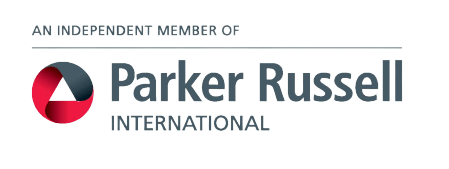We are often asked about the tax associated with a Director’s Loan Account (DLA). We asked our tax team to tell us more!
What is a Director’s Loan Account
A DLA is a loan between a company and its directors/shareholders. While a DLA specifies ‘director’, the implications discussed below actually relate to participators. A participator is an individual that holds at least 5% of the shares within a company.
Function of a Director’s Loan Account
A DLA allows a participator to loan to or receive a loan from their company. As they can have a say over the terms of the loan, this is seen as not at arm’s length and is often repayable on demand rather than over a set period. Similarly, there is often no interest applied.
Why have a DLA and when?
Where a participator loans to their company, this is often to assist the business when starting out as the participator will take out a personal loan and put this into the company. The participator will then be able to extract profits from the company tax free whilst this is being repaid.
On the other hand, where a participator receives a loan from the company, this is often in the absence of salary or dividends to support the participators lifestyle. This can be used:
- to maintain a specific level of income on the participator by not voting higher dividends, or
- where the company has cash, but no reserves therefore cannot vote dividends.
Given this, the loan will eventually need to be repaid or have dividends voted to repay this.
Applicable interest rates and repayment terms
As mentioned above, the terms of the loan are often more favourable than a third-party loan as it can be interest free and repayable at an unspecified date. However, this can cause implications elsewhere.
Where a participator (or employee) receives an interest free loan from a company that exceeds £10k, a benefit in kind arises. To avoid this, interest should be charged at the HMRC official rate (currently 2.25% in 2024/25). This interest will then be taxable income within the company.
On the reverse, a participator (or any other individual) may charge the company interest on any loans provided to the company. Interest payable would be tax deductible for the company and taxable income on the individual.
Additional considerations need to be given where a company pays interest to an individual as a form CT61 must be completed. This is comparable to PAYE where the company deducts 20% tax at source followed by paying the net interest amount to the individual. Any over or under payment of tax will be resolved on the individual’s personal tax return.
The deduction can vary where the individual is non-UK tax resident.
Section 455 tax on a Director’s Loan Account
Section 455 (s.455) tax applies where a participator has a loan outstanding from their company of any amount at the end of the accounting period. This only applies to a close company – defined by being owned 75% or more by 5 or fewer individuals – therefore will not apply to all companies.
S.455 tax applies to charge the company the higher rate of dividend tax (currently 33.75% in 2024/25) on the loan in the absence of taxable income being charged on the participator. The idea is for the company to pay the tax in the interim and gain a refund once the participator pays income tax.
The tax is only applied if the loan is still outstanding nine months following the end of the tax year, i.e. by 30 September for a December period end. If not, the s.455 tax will be payable with the company’s usual liability i.e. typically nine months and one day after the year end.
When and how to repay an overdrawn Director’s Loan Account?
There are several ways to repay a DLA to a company:
- Via cash transfer,
- Vote dividends or pay a bonus to be set against the loan rather than withdrawn, or
- Write off the loan.
Each method, however, has different consequences.
If being repaid via cash transfer or being written off, bed and breakfasting rules must be considered and therefore another loan cannot be taken shortly after the repayment.
If voting dividends or using other taxable income, bed and breakfasting rules do not apply but there will be tax payable for the participator.
If being written off, this is deemed a dividend for the individual’s personal tax therefore the income tax implications will still need to be considered. Additionally, the company will not be given a corporation tax deduction for the loan write off. However, the company must charge Class 1 national insurance with the loan amount being the net figure as this will be deemed salary for national insurance purposes. This Class 1 national insurance will receive a corporation tax deduction.
Once the DLA is deemed repaid, the company can reclaim the s.455 tax paid nine months following the accounting period in which the loan is repaid. That being said, if the company is looking for a cash inflow by reclaiming the s.455 tax, the timing of the repayment will need to be considered. For instance, if the loan is repaid at the beginning of an accounting period, it could be 21 months before the repaid can be claimed.
Complexities of a DLA and advantages of seeking professional advice?
With all the various implications to be considered from benefits in kind and s.455 to income tax and national insurance, a professional can provide calculations on the tax implications of the various options around an overdrawn DLA.
If you would like to speak to a member of our private client or corporate tax teams about a director’s loan account, please contact us on 020 7870 9050.



